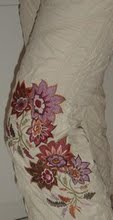parrotfish
One of my favourite fish to see while snorkelling is the Parrotfish. I once hovered over eight of them, all different colours & shapes as they glided from one end of the Tobacco Bay shore to the other & they didn't seem to mind one bit. Boy was that an experience to remember. Parrotfish are abundant in Bermuda's waters, existing in a multitude of colours that are very vibrant much like the parrots of the world. They are also one of Bermuda's protected species - if you catch one you have to toss it back in. A fully grown parrotfish is about the full length of your arm & about a foot and a half wide. It's mouth, shaped like the beak of a parrot (hence the name), is an effective & necessary tool for scraping away the coral to get at the algae - their main diet (you can even hear then crunching away at the coral when you're snorkelling). They are also known as the recyclers of coral as they produce & distribute coral sands via their feeding activities. It is for this reason that the parrotfish is vital to Bermuda coral reefs.
Parrotfish can be found in the shallowest of waters, sometimes also spotted by rocks at the edge of the shoreline. They hibernate at night under rocks in a self made mucus cocoon that may take a half hour to break out of in the morning. Given their brilliant facade of colour, they are also colour blind. But perhaps the most interesting fact about parrotfish is it's ability to change sex when there is a shortage of males. Oh, you heard right & it's not possible the other way around. It's only the females that can make the sex transition. Mother Nature sure does have a very feminist sense of humour, in this instance. Imagine a scorned female parrotfish's train of thought: 'I don't need him, I can be him!'




1 comment:
awesomely awesome snaps
Post a Comment